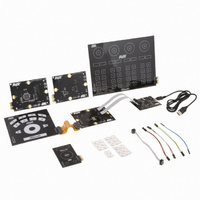ATQT600 Atmel, ATQT600 Datasheet - Page 34

ATQT600
Manufacturer Part Number
ATQT600
Description
KIT EVAL TOUCH FOR QT600
Manufacturer
Atmel
Series
QTouch™r
Specifications of ATQT600
Sensor Type
Touch Screen
Interface
USB
Embedded
Yes, Other
Utilized Ic / Part
ATtiny88, ATmega324PA, ATxmega128A1
Processor To Be Evaluated
ATtiny88, ATmega324, ATxmega128
Data Bus Width
8 bit, 16 bit
Interface Type
USB
Maximum Operating Temperature
+ 85 C
Minimum Operating Temperature
- 40 C
Operating Supply Voltage
1.6 V to 3.6 V
Silicon Manufacturer
Atmel
Kit Application Type
Sensor
Application Sub Type
Touch Sensor
Kit Contents
USB Bridge, MCU Cards, Touchpad Cards
Svhc
No SVHC (15-Dec-2010)
Mcu Supported Families
ATtiny88,
Rohs Compliant
Yes
Lead Free Status / RoHS Status
Lead free / RoHS Compliant
Voltage - Supply
-
Sensitivity
-
Sensing Range
-
Lead Free Status / Rohs Status
Lead free / RoHS Compliant
Available stocks
Company
Part Number
Manufacturer
Quantity
Price
Company:
Part Number:
ATQT600
Manufacturer:
Atmel
Quantity:
135
10620D–AT42–04/09
Mutual-capacitance Zero-dimensional Sensors
4.2.2
4.2.2.1
4.2.2.2
4.2.2.3
4.2.2.4
4-2
X and Y Electrodes
Interdigitating the X and Y Electrodes
Width of Y Electrodes
Width of X Electrodes
Spacing Between the Electrodes
The X and Y electrodes are generally interdigitated, that is they form interlocking “fingers”. Typically the
X electrode surrounds the Y electrode, as it helps to contain the field between the two (see
Figure 4-2.
The Y electrodes should use the thinnest trace possible (say, 0.1 to 0.5 mm) for the Y fingers, as this
minimizes the possibility of noise coupling to the sensor during touch. Although past advice has
suggested Y trace widths as a function of T, extensive field testing has shown that a better SNR is
achieved using thinner traces.
For the X electrodes, wider electrodes are generally preferred as they tend to act as partial shields for
the Y traces. They also help maximize the free space coupling of small battery-powered products.
The width of the X fingers for the X electrodes should be calculated from thickness of the overlying
panel (T). Generally, the function T/2 is used, as shown in
As with the width of the X fingers, the spacing between the X and Y electrodes should be calculated from
thickness of the overlying panel (T). Again, the function T/2 is generally used, as shown in
T = Front panel thickness
* Y
constants rules (this is very important, for example, for ITO)
X
Y
(Typically
0.1–0.5 mm)*
width
border
width
Interdigitated X and Y Electrodes
is related to electrode conductivity. Keep Y line worst case resistance in line with RC time
³
T/2
T/2
T
X Electrode
T
W
T/2
T
Figure
Y Electrode
4-2.
T/2
Touch Sensors Design Guide
Figure
Figure
H
4-2.
4-2).













